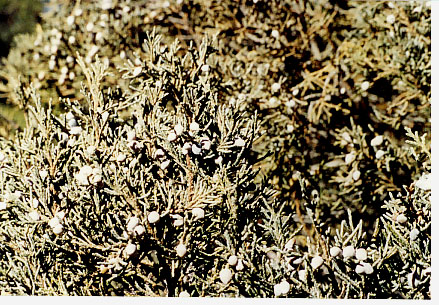English
juniper, rocky mountainArapaho
be’3eino’oTranslation of the Arapaho
‘red inside’
Juniper and the Arapaho
Drug: disinfectant. Cedar incense is used as a general disinfectant. It was and still sometimes is used to scare away ghosts.
Drug: respiratory aid, cough medecine, throat aid, cold remedy, herbal steam. Fortreatment of colds, respiratory congestion, coughs, sore throats. People today boil the needles and/or, then place a blanket or towel over the mixture and inhale the steam beneath the blanket to relieve congestion from colds. A tea is made by boiling the berries. This is drunk to treat coughs. This can also be gargled for sore throats.
Other: ceremonial incense. This plant is widely used for “smuding” or “cedaring” - ritual purification through incense. In the field, both of the above named species have been identified with the Arapaho name. Nickerson 1966 confirms the use of J. communis [J. sibirica], giving the Arapaho name as <beth-they-naw>. He says the needles were “burned as a disinfectant,” and “ground for their scent.”
Toll 1914 identifies his name with “juniper bush” and says that the Arapahos “made cups of them.” This may be a misunderstanding/mistranslation of the name: 3eiyoo can mean ‘cup’ in Arapaho. Hayden’s <to-sath>, given for “Juniperus,” is recognized by some people today, who identify it with this species. Hayden identifies<sath-i-win> = “little pine berries” with “a species of trailing Juniperus.”

Sabina scopulorum